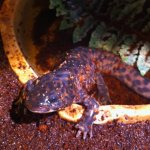A
achiinto
Guest
I have gotten 8 Anderson salamanders 6 months ago. 2 dies due to aggression and I was forced to separate them. 1 is sold away. 3 out of the remaining have then metamorphed. And now one more is show sign to morph.
Why is this happening? I have kept axolotl as well and under similar condition of cares and do not metamorphs. Is there a stronger tendency for Anderson to morph than axolotl? What can I do to prevent this? Is there other mole salamander species that look like Anderson salamander?
Thanks!
Why is this happening? I have kept axolotl as well and under similar condition of cares and do not metamorphs. Is there a stronger tendency for Anderson to morph than axolotl? What can I do to prevent this? Is there other mole salamander species that look like Anderson salamander?
Thanks!


